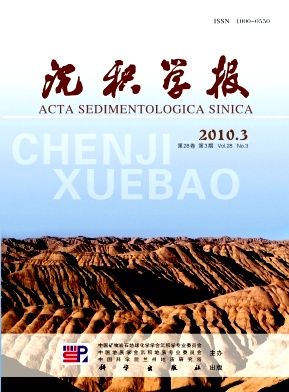Geochemical Characteristics and Geological Significance of Shengli River Oil Shale in Qiangtang Basin, Northern Tibet, China
- Received Date: 1900-01-01
- Rev Recd Date: 1900-01-01
- Publish Date: 2010-06-10
-
Key words:
- Qiangtang Basin
Abstract: Marine oil shale from the Shengli River oil shale section discovered in 2008 in the Qiangtang basin, northern Tibet, China, was collected systematically and analyzed by means of GCMS. The results indicate that the oil shales from Shengli River area exhibit relatively high values of C31steranes 22S/(22S+22R) \[0.38~0.44\], C29steranes αββ/(ααα+αββ) \[0.37~0.47\] and C31steranes 22S/(22S+22R) \[0.52~0.59\] ratios. These results indicate that the thermal evolutionary phase of organic matter in oil shale has reached oilgenerating window. The relatively high concentrations of C27steranes\[32.82%~43.6%\] and relatively high values of 4methyl sterane to regular sterane ratios\[0.04~0.22\], sterane to hopane ratios\[0.80~1.04\] unanimously indicate that the biological sources of organic matter in oil shale are phytoplankton and bacteria, especially with an important contribution of phytoplankton. The relatively high values of gammacerane index\[0.34~0.50\], homohopane index \[0.076~0.102\] and low pristine to phytane ratios\[0.320.49\]indicate the occlusive water environments are anoxic and relatively hypersaline in the Shengli River area during oil shale deposition.
| Citation: | HE Jianglin. Geochemical Characteristics and Geological Significance of Shengli River Oil Shale in Qiangtang Basin, Northern Tibet, China[J]. Acta Sedimentologica Sinica, 2010, 28(3): 626-634. |






 DownLoad:
DownLoad: